C program Create a class Vector with floatingpoint fields x
C++ program
Create a class Vector with floating-point fields x, y, and z, with accessors, mutators, and constructors for these. Also create methods Vector Vector::add(Vector u) float Vector::dot(Vector u) Vector Vector::cross(Vector u) Create a header vector.h and source vector.cpp. Demonstrate the functions in the file vector-ops.cpp. Translations to and from polar coordinates. Additional points if the following methods are implemented: float Vector::radius() float Vector::theta() float Vector::phi() Vector Vector::Vector(float radius, float phi, float rho) That is, the methods radius, theta, and phi should give the magnitude radius the polar angle theta, and the azimuthal angle phi. In addition, a constructor should be added such that when these values are supplied, a Cartesian vector is created. Demonstrate these also in vector-ops.cpp. Make it generic and overload operators. Additional points if you make the class generic. Also, instead of defining add, overload the + operator; instead of dot, overload *; and instead of cross, overload &. Demonstrate these as well in vector-ops.cpp.Solution
# include<iostream>
# include<cmath>
using namespace std;
//class vector specified in Question
class Vector
{
public:
float x,y,z;
Vector():x(0),y(0),z(0){
}
Vector add(Vector u);
float dot(Vector u);
Vector cross(Vector u);
float radius();
float theta();
float phi();
void display()
{
cout<<x<<\"i + \"<<y<<\"j + \"<<z<<\"k\"<<endl;
}
Vector(float rad, float p,float rho);
Vector operator+(Vector u); //operator overloading + for add
float operator*(Vector u); //operator overloading * for dot product
Vector operator&(Vector u); //operator overloading & for cross product
};
# include \"vector.h\"
Vector Vector::add(Vector u)
{
Vector temp;
temp.x = x+u.x;
temp.y = y+u.y;
temp.z = z+u.z;
return temp;
}
float Vector::dot(Vector u)
{
return (x*u.x) + (y*u.y) + (z*u.z);
}
Vector Vector::cross(Vector u)
{
Vector temp;
temp.x = y*u.z-z*u.y;
temp.y = z*u.x-x*u.z;
temp.z = x*u.y-y*u.x;
return temp;
}
float Vector::radius()
{
float r = std::sqrt((x*x)+(y*y)+(z*z));
cout<<\"Radius is: \"<<r<<endl;
return r;
}
float Vector::theta()
{
float t = atan(y/x);
cout<<\"Theta is: \"<<t<<endl;
return t;
}
float Vector::phi()
{
float p = atan((std::sqrt((x*x) + (y*y)))/z);
cout<<\"phi is: \"<<p<<endl;
return p;
}
Vector::Vector(float radius, float phi,float rho)
{
float X = radius * sin(phi) * cos(rho);
float Y = radius * sin(phi) * sin(rho);
float Z = radius * cos(phi);
cout<<\"Cartesian Vector is\"<<endl;
cout<<X<<\"i + \"<<Y<<\"j + \"<<Z<<\"k\"<<endl;
}
//defination of operator overloaded function +
Vector Vector::operator+(Vector u)
{
Vector temp;
temp.x = x+u.x;
temp.y = y+u.y;
temp.z = z+u.z;
return temp;
}
//defination of operator overloaded function *
float Vector::operator*(Vector u)
{
return (x*u.x) + (y*u.y) + (z*u.z);
}
//defination of operator overloaded function &
Vector Vector::operator&(Vector u)
{
Vector temp;
temp.x = y*u.z-z*u.y;
temp.y = z*u.x-x*u.z;
temp.z = x*u.y-y*u.x;
return temp;
}
# include<iostream>
# include \"vector.h\"
using namespace std;
int main()
{
Vector V,u,temp,temp1,temp2,temp3;
V.x = 1;
V.y = 2;
V.z = 3;
u.x = 4;
u.y = 5;
u.z = 6;
float p = V.dot(u);
cout<<\"Dot product of vector is: \"<<p<<endl;
temp=V.add(u);
cout<<\"Addition of vector is :\"<<endl;
temp.display();
temp1=V.cross(u);
cout<<\"cross product of vector is :\"<<endl;
temp1.display();
float rad,phi,rho;
rad = 12.3;
phi = 0.7;
rho = 0.9;
Vector t(rad,phi,rho);
p = V*u;
cout<<\"Dot product of vector is: \"<<p<<endl;
temp2=V+u;
cout<<\"Addition of vector is :\"<<endl;
temp2.display();
temp3=V&u;
cout<<\"cross product of vector is :\"<<endl;
temp3.display();
return 0;
}
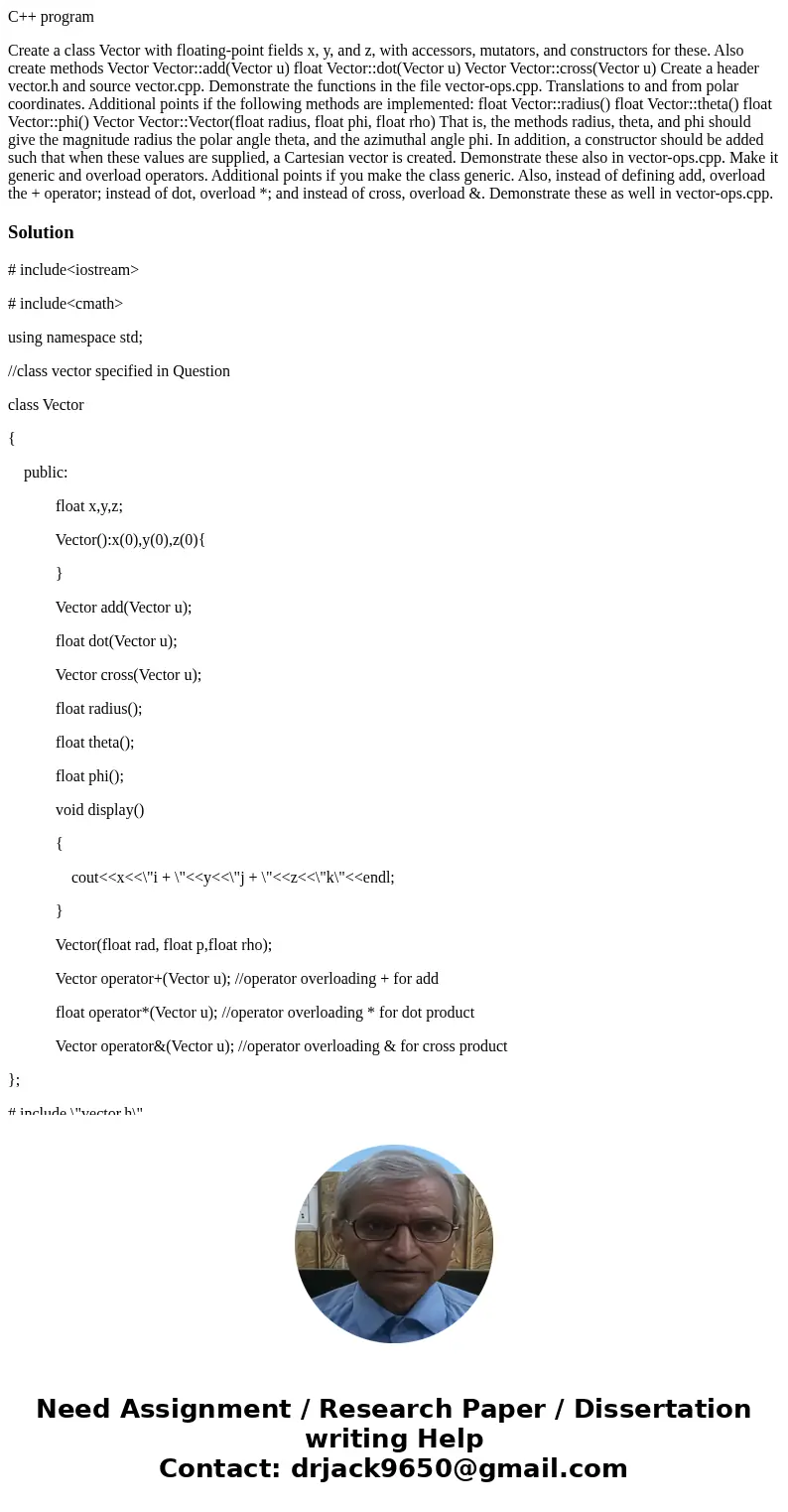
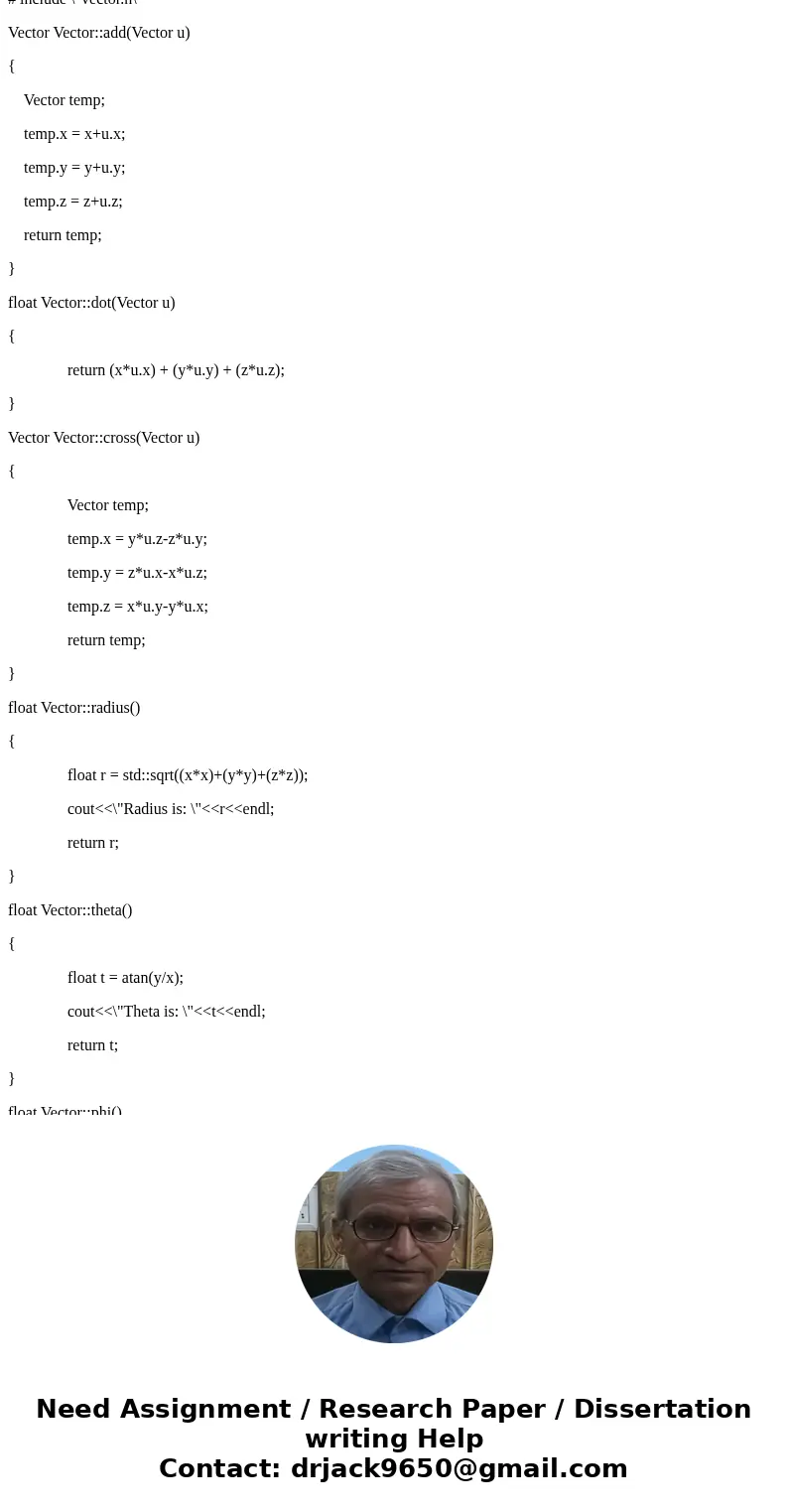
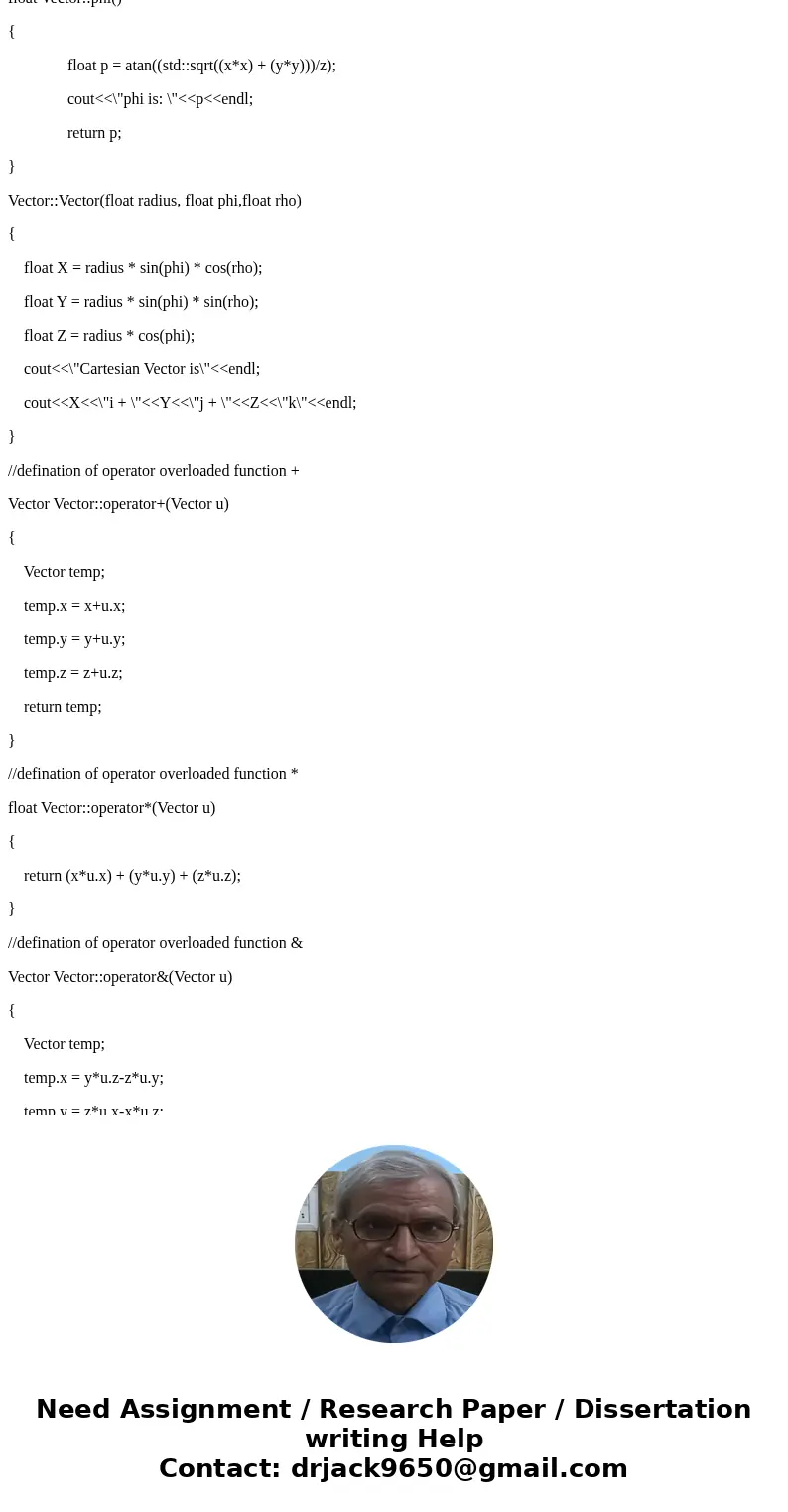
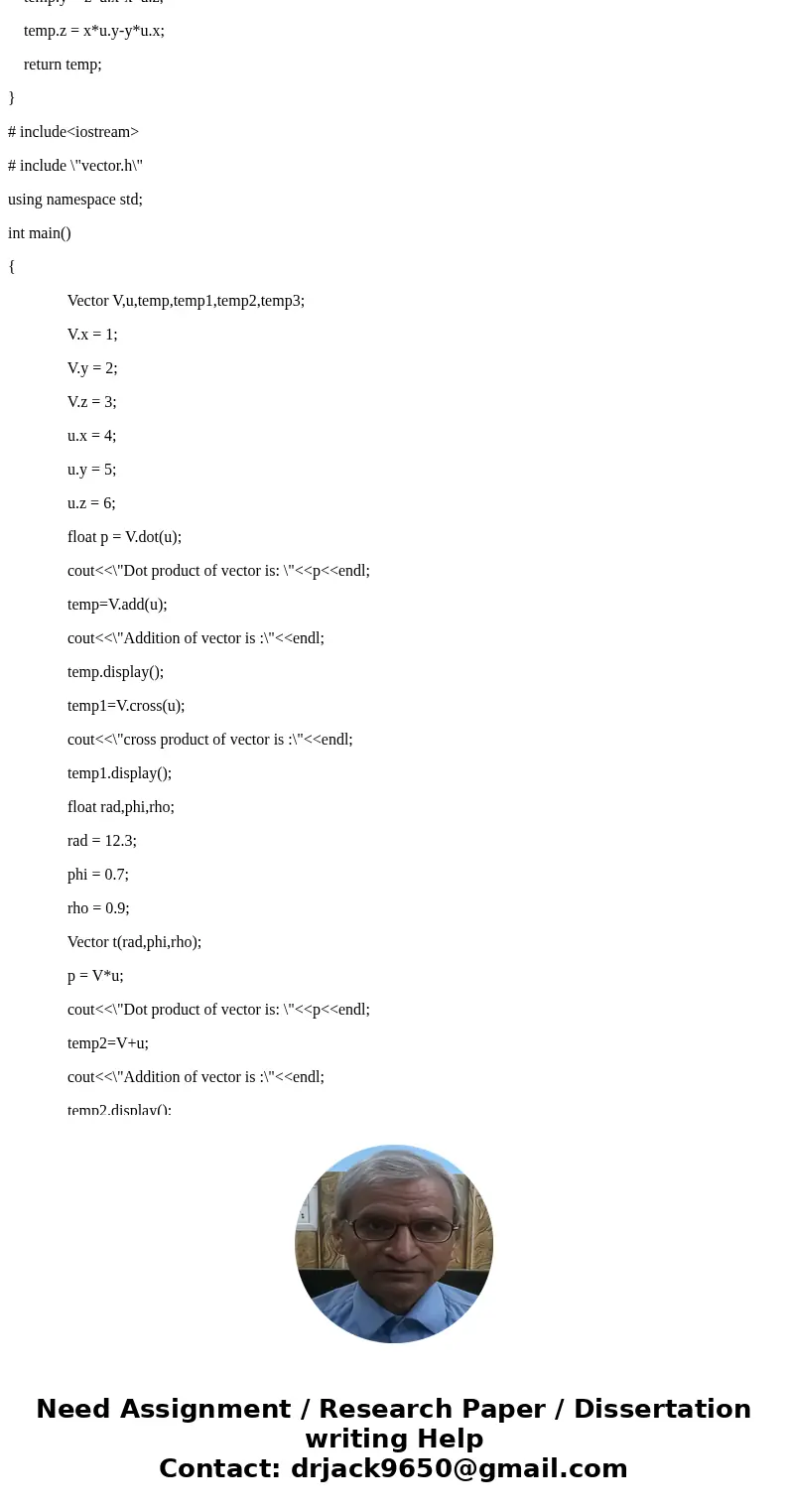
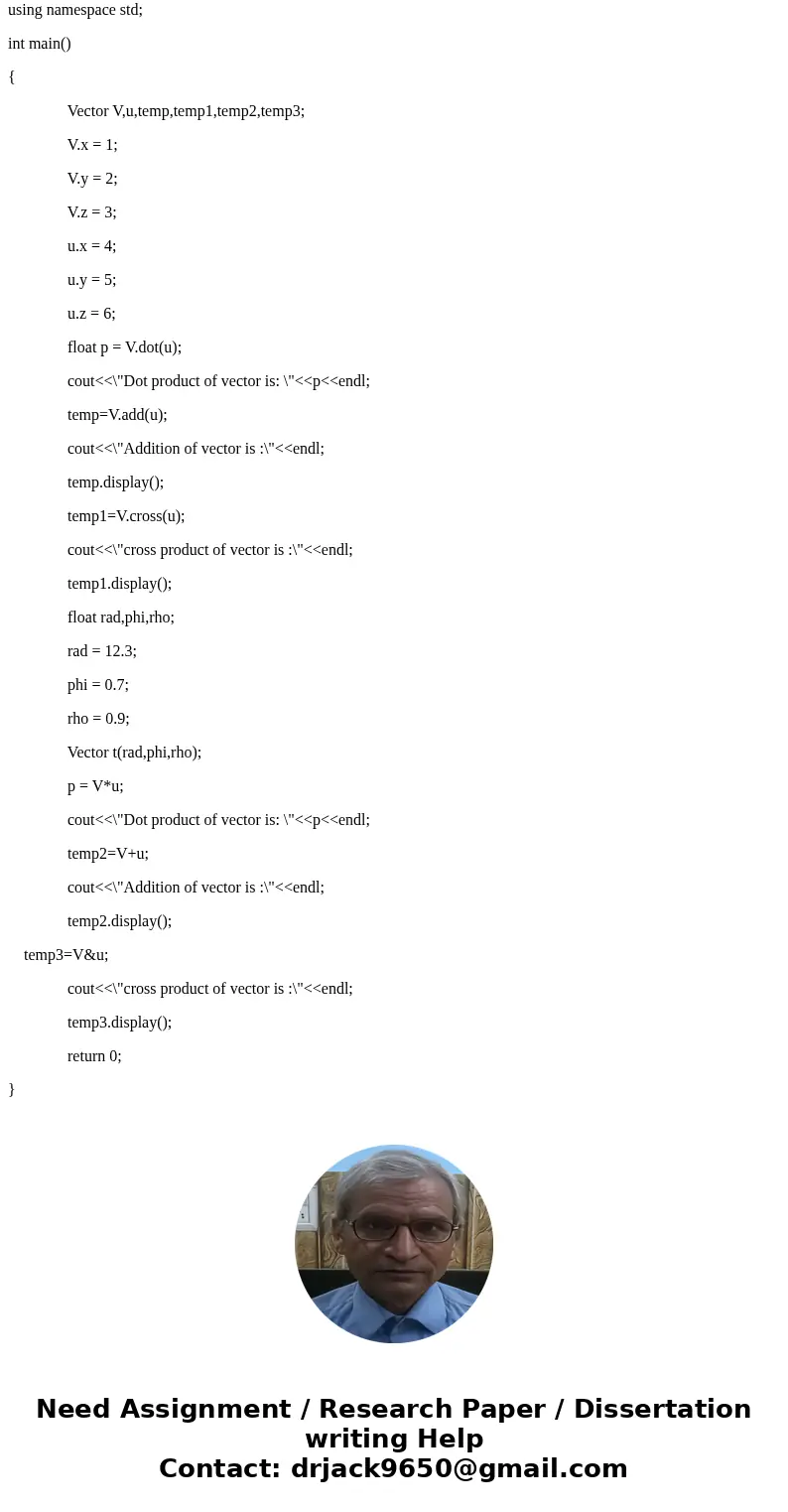
 Homework Sourse
Homework Sourse